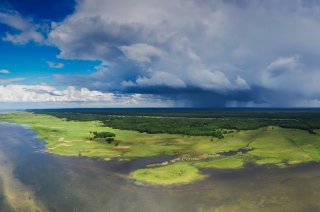
category_news
Five questions about 30 by 30, the Biodiversity Summit’s ambition
The EU, and thus the Dutch delegation, aims to achieve concrete agreements on more nature reserves at a global level, at the Biodiversity Summit (COP15) in Canada. Thus, it hopes to halt biodiversity loss. The goal is to have 30% of the earth marked as a nature reserve by 2030. In short: 30 by 30. What does that mean? WUR researcher Jelle Behagel, one of the participants in the Biodiversity Summit, explains.
How much of the earth is currently considered protected nature?
Behagel: ‘At this time, 15% of the earth’s land surface is protected nature, and 7.4% of the sea surface is in some way protected. That area must be doubled on land and quadrupled at sea. Some countries have already marked 30% of their land as a nature reserve, like many countries in Africa and Latin America. They say: great goal; we’re done. There is ample support for 30 by 30, but figuring out which countries must increase the protected area will be quite a discussion.’
What interests and considerations are included in this discussion?
Behagel: ‘Several countries, including those collaborating as the “African group”, argue that appointing areas as a nature reserve must not result in human rights violations. This argument refers to the emergence of game parks in Africa, which displaced local populations and denied them access to the land. That is something we no longer want. We now aim to combine nature conservation with the protection of indigenous populations who practice small-scale subsistence farming in vulnerable nature reserves.’
Could you name the areas involved?
Behagel: ‘The areas it concerns are regions without modern agricultural practices where the indigenous population more or less conserves and respects nature; parts of Sweden, Indonesia, Brazil, Australia, Mexico and many countries in Africa. There are barely any such regions in Europe. The issue is that we can’t just clear out 15% of the earth to make room for nature. So, you look for areas with a vulnerable population and nature which you can protect. However, this costs money.
Which leads to the question: who will pay?
‘Western countries or businesses. In other words, the world’s capital centres. The conference will show whether these capital centres are willing. The question is, how do you fund these new nature reserves? Will the funds go to governments or projects?'
How much of the Netherlands consists of nature?
‘Colleague Marlies Sanders calculated that. It depends on how you define nature. The legally protected Natura 2000 areas cover 15% of the Netherlands (land and interior waters), and 24% of the coast and marine areas (including the Wadden Sea). Approximately 26% of the Netherlands consists of planned protected land and interior waters (including the Ijsselmeer). To achieve the 30% target before 2030, the government must earmark a further 150 thousand hectares as conservation areas. That is an area the size of Utrecht province. Such an area is relatively large for the Netherlands, which is why negotiations are underway within the EU about how this percentage will be distributed among all the member states. The Netherlands could possibly contribute a little less if a country such as Germany, for example, contributes a little more.’